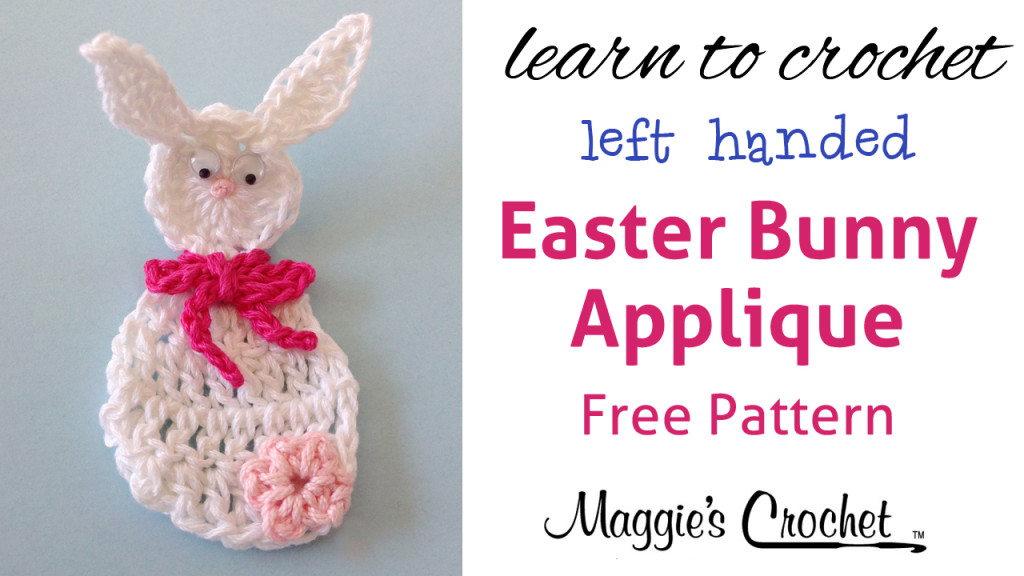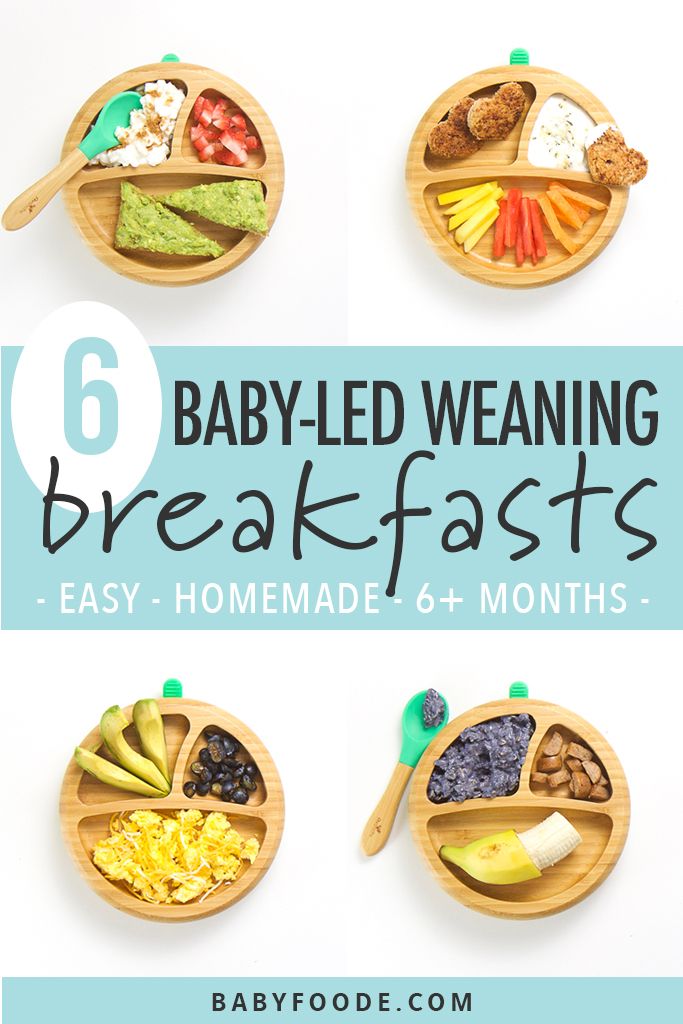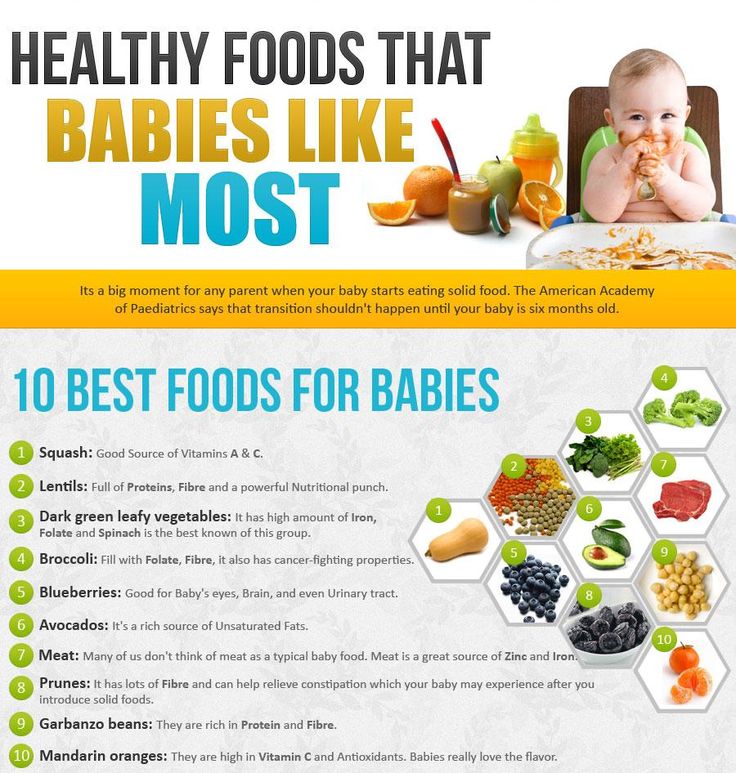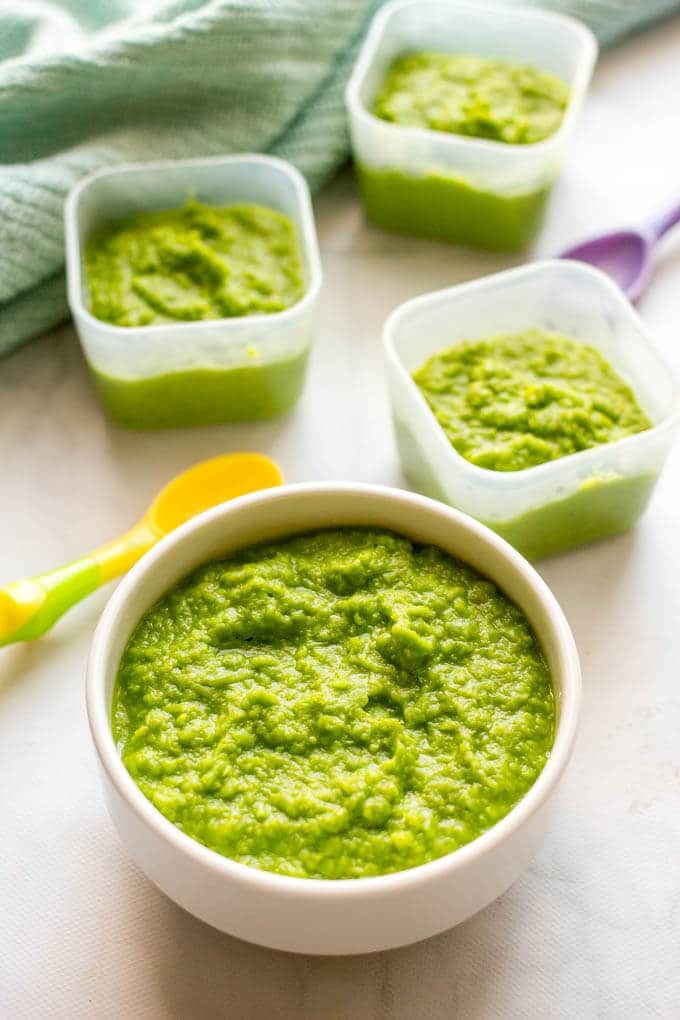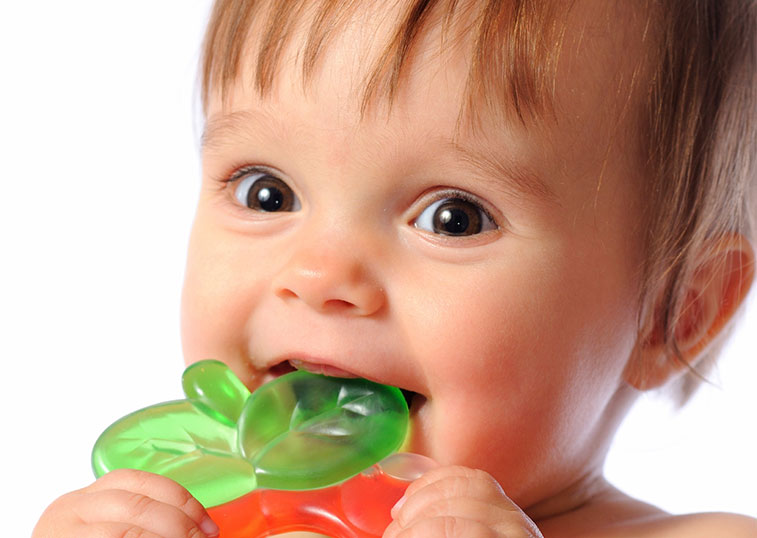How to feed baby bunnies by hand
Hand-Raising Baby Rabbits - Feeding, Vaccinations & More
Hand-raising baby rabbits can be tricky and demanding, requiring a lot of time and dedication. This responsibility should never be taken lightly, and some points should be considered before deciding to hand-raise a baby bunny.
First and foremost, it is important to be 100% sure that the mother rabbit isn’t feeding the babies. Unless the mother rabbit is known to be deceased, there is a good chance that she is feeding her babies, even if it appears that she might be ignoring them.
A mother rabbit does not constantly tend to her babies the way we might think. Instead, they generally feed their babies only once or twice per day and then leave them alone, which is normal and natural behaviour. In the wild, a mother rabbit generally stays as far away from the nest as possible to avoid attracting predators to her babies. She will only revisit the nest to feed her young.
Signs of Neglect
If you think the mother rabbit is “ignoring” her litter, have a look at the babies. If the babies’ tummies are round and full looking, they are warm, their skin is not wrinkled, and they are sleeping calmly in the nest, then the mother rabbit is likely feeding them. If the babies are wrinkled, cold or have shrunken bellies, then this is a sign you may have to intervene.
Handling Newborn Rabbits
Before handling the babies, you must wash your hands well. This removes bacteria and eliminates any smells from other objects or animals that can stress the babies. Once your hands are clean, rub your hands in a bit of clean, fresh hay and on the mother rabbit’s fur to scent your hands.
Feeding Newborn Rabbits
Before starting any syringe or bottle-feeding, it is worth trying to get the babies to feed off their mum. There are a couple of ways to do this.
-
- Hold the mother over the babies in the nest to give the babies enough time to feed.
- Another option is to hold the mother rabbit on her back in your arms and gently try to put each baby onto a nipple to self-feed.
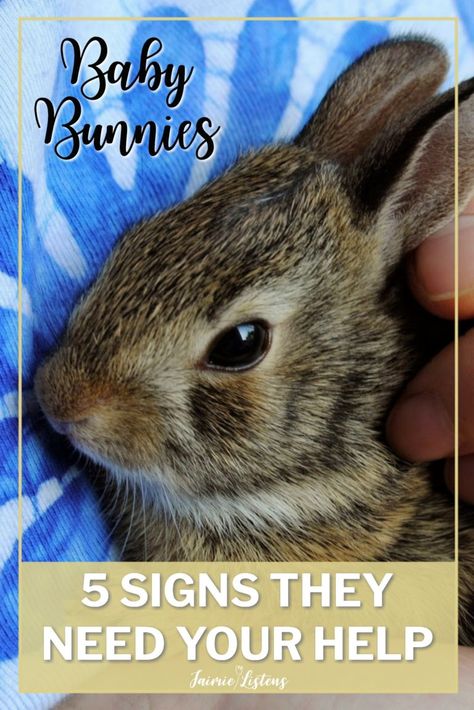 Sometimes it is helpful for the babies if a small amount of milk is expressed from the nipple to entice the baby to suckle.
Sometimes it is helpful for the babies if a small amount of milk is expressed from the nipple to entice the baby to suckle.
If these two methods prove unsuccessful is not successful, then you may need to start hand-raising.
Providing Warmth
It is best to keep the babies in a warm, quiet place in a nest. Bunny fur is the best lining for the nest, but clean cotton wadding will do as a substitute. Just be sure the babies do not get tangled in it. For heating, two or more babies usually can snuggle and keep each other warm if they have a good nest. If there’s only one baby, a warm water bottle or heat pack wrapped in a soft towel can provide an excellent heat source however be sure the baby can crawl away if it feels too warm.
Formula and Feeding Supplies
We recommend using the Wombaroo Rabbit Milk as it is well balanced and contains a ‘milk oil’ equivalent which is important for baby rabbits. It comes as a powder that can be mixed with warm water to make milk for the babies. All the mixing instructions are on the box. Wombaroo Rabbit Milk can be purchased from The Unusual Pet Vets, some veterinary clinics and pet stores.
All the mixing instructions are on the box. Wombaroo Rabbit Milk can be purchased from The Unusual Pet Vets, some veterinary clinics and pet stores.
You will also need some small plastic syringes for feeding the milk to the babies. These are available from the Unusual Pet Vets, as well as some pharmacies.
You can also purchase small plastic feeding bottles and plastic teats from some large pet shops; however, you will need to buy the smallest teat possible as usually the puppy and kitten ones are too big. Most baby rabbits will feed from a syringe without a problem.
A small set of scales to weigh the baby rabbits will also be required. The amount of milk to feed is dependent on the baby rabbit’s weight. There is a weight chart on the Wombaroo Rabbit Milk box and the mls of milk to be fed over 24 hours. How much the baby rabbit will take in one feeding session depends on how frequently you have the feed them.
Feeding Procedure
When feeding, it is important to prevent aspiration (inhalation) of the formula by the babies. The smallest drop of formula in the lungs can cause fatal pneumonia within a few hours. The following instructions provide a step-by-step feeding guide:
The smallest drop of formula in the lungs can cause fatal pneumonia within a few hours. The following instructions provide a step-by-step feeding guide:
Step 1
Make sure all your syringes and bottles have been washed before use.
Step 2
Baby rabbits can be wiggly and unpredictable, so ensure they are fed in a safe place where they cannot fall.
Step 3
Hold the baby upright (or in some cases on their back gently) in one hand and the bottle/syringe in the other.
Step 4
Babies often resist feeding at first, and you must overcome the temptation to force-feed. If the baby doesn’t accept the teat or syringe, then wet the baby’s lips with a drop of warm formula so they will hopefully lick it off. Once they have swallowed that, repeat the procedure over and over. Be persistent and gentle. In most cases, the baby will soon learn about feeding time and take the formula willingly though they may not do this on the first feeding.
Step 5
Do not be too forceful and squeeze too much formula into the baby rabbit’s mouth. They can aspirate milk quite easily, so only drip the formula slowly for the baby to lick up.
They can aspirate milk quite easily, so only drip the formula slowly for the baby to lick up.
Step 6
If the baby grabs the teat and begins suckling, allow them to do so without adding any pressure yourself. The baby should be able to suckle with enough strength to empty the bottle or syringe without any help from you. If you provide extra force, the baby may accidentally aspirate formula that’s coming in too fast.
Step 7
If the baby does not suckle, it’s generally not a major problem. Most will learn to lap/sip from the tip of the teat, and this is safer in many cases as it does reduce the risk of aspiration. Try to hold the teat/syringe tip sideways or down-pointed (so the plunger is lower than the tip) relative to the mouth to further reduce the risk of aspiration.
Step 8
Until they open their eyes, handle the babies as little as possible when you’re not feeding.
Urination and Defecation
Many newborn mammals cannot urinate/defecate on their own. Many baby bunnies will require the stimulation of the mother’s grooming tongue on their bellies and genital region in order to release a stream of urine and faeces. If you are hand-raising, then you will need to try to mimic this behaviour. To do this, use a cotton ball moistened with warm water, and gently tap/rub the urogenital area until you feel the baby’s abdominal muscles tense and release a stream of urine or pass faeces. Getting this response may take 15-20 seconds of stimulation, or even more in some cases.
Many baby bunnies will require the stimulation of the mother’s grooming tongue on their bellies and genital region in order to release a stream of urine and faeces. If you are hand-raising, then you will need to try to mimic this behaviour. To do this, use a cotton ball moistened with warm water, and gently tap/rub the urogenital area until you feel the baby’s abdominal muscles tense and release a stream of urine or pass faeces. Getting this response may take 15-20 seconds of stimulation, or even more in some cases.
Baby rabbits’ eyes open at about 10 days of age. Once this occurs, you can gradually introduce them to timothy and oaten hay, pellets, small amounts of green vegetables, and water in a shallow dish.
By 2 – 4 weeks of age, normally, baby rabbits will start eating their mother’s caecotrophs to keep their gastrointestinal tract full of good bacteria. If you have access to the mother rabbit or another healthy rabbit’s caecotrophs – mix them with some formula or some warm water and syringe feed this to the babies. It is good to repeat this 2 or 3 times over a 2 – 3 week period to help them establish normal gastrointestinal flora.
It is good to repeat this 2 or 3 times over a 2 – 3 week period to help them establish normal gastrointestinal flora.
Weaning
A mother rabbit feeds her babies for about 3 – 6 weeks, gradually decreasing the frequency of feedings until they lose interest. Your baby bunnies will start to nibble solid food at about the age of two to three weeks, but this does not mean they are ready to be weaned.
If the babies still beg for nursing by the age of 6-8 weeks, you can begin to dilute the formula with clean drinking water to help the weaning process. Start with 25% water to 75% formula, and gradually decrease the percentage of milk until the babies lose interest.
Baby rabbits can then be rehomed to new families by 8 weeks of age, as long as they are fully weaned and eating solids well on their own.
Vaccinations
Baby rabbits should then be vaccinated against Calici Virus when they are eight weeks old, then a booster is required four weeks later, and then bi-annually from then on.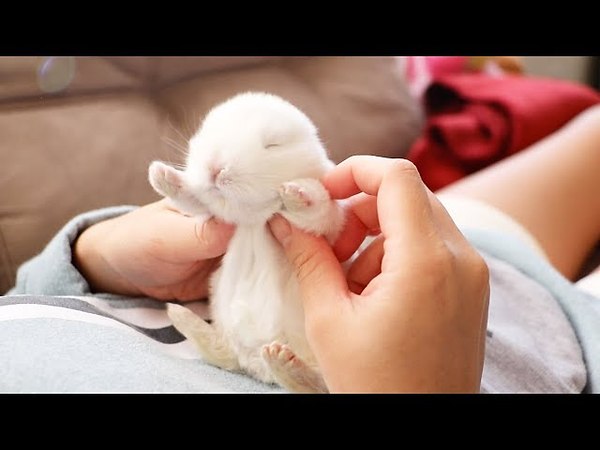
Sterilisation
Rabbits can generally be sterilised from 4 months of age for males and 5 months for females. Male and female baby rabbits should be separated from each other by 10 – 12 weeks of age to prevent any early pregnancies.
If you have any further questions, please don’t hesitate to get in touch with us or book an appointment with a rabbit vet.
Caring for Newborn Baby Rabbits
IF THESE ARE WILD BABIES
It’s that time of year again. Wild babies everywhere. But are they at risk?
Wild rabbits hide their nests in plain view, often in the middle of your yard, bushes, etc. If you find a nest that has been disturbed, do the best you can to restore it and leave the babies in there. If a dog discovers the nest, do your best to restore it (with grass, leaves, whatever mama has used), make sure the kits are in there, and find a way to keep the dog(s) away from the nest. Mama will return for her babies and taking them away will seriously decrease their chance of survival. If you do not see the mama—DON’T WORRY—they only nurse their babies a few minutes a day, then they stay away so as to not draw predators to the nest.
If you do not see the mama—DON’T WORRY—they only nurse their babies a few minutes a day, then they stay away so as to not draw predators to the nest.
If a kit is injured or an animal brings you an injured baby, if you have no choice but to help a baby, please do not try to care or it yourself—-get it to a rabbit vet or a wildlife rehabilitator
- Local wildlife rehabilitator: https://www.nwrawildlife.org
- List of rabbit vets: http://rabbit.org/vet-listings/
The best thing you can do for wild babies is to leave them alone (restored to the nest) or, if injured, get them to a rabbit vet or wildlife rehabilitator.
DOMESTIC/PET RABBITS
WHERE TO PUT THE BABIES
Make the babies a soft nest area in a box with clean towels. We like to put one folded towel on the bottom and another bunched on top of that, so the babies can snuggle into it. You can also purchase soft nesting wool from a pet store and put that on top of the towel. You can also take whatever nesting material they were in and put it in the box as well. Cover the box almost entirely with a light towel, making sure that there will be enough air so the babies do not suffocate. Leaving about a one inch gap at the top is usually sufficient. Keep the babies in an out-of-the way, QUIET area, such as an adult’s bedroom. If the room temperature is between 68-72 degrees you will not need to provide extra heat, but if it’s cooler than that you will need to provide extra warmth. Use a heating pad set on low and slip it under one half only of the box. We do it this way so that the babies can move to a cooler area if it gets too warm. DO NOT put babies directly on heating pad, as babies can burn themselves very badly.
You can also take whatever nesting material they were in and put it in the box as well. Cover the box almost entirely with a light towel, making sure that there will be enough air so the babies do not suffocate. Leaving about a one inch gap at the top is usually sufficient. Keep the babies in an out-of-the way, QUIET area, such as an adult’s bedroom. If the room temperature is between 68-72 degrees you will not need to provide extra heat, but if it’s cooler than that you will need to provide extra warmth. Use a heating pad set on low and slip it under one half only of the box. We do it this way so that the babies can move to a cooler area if it gets too warm. DO NOT put babies directly on heating pad, as babies can burn themselves very badly.
If the babies were with their mamma, but she is not caring for them (and you are sure she is ignoring them) you may need to separate her from them so they will not get hurt. Rabbit milk is very caloric and the kittens (baby rabbits) only nurse for a few minutes a day, so if you think that she is not caring for them based only on the fact you don’t see them feed…think again.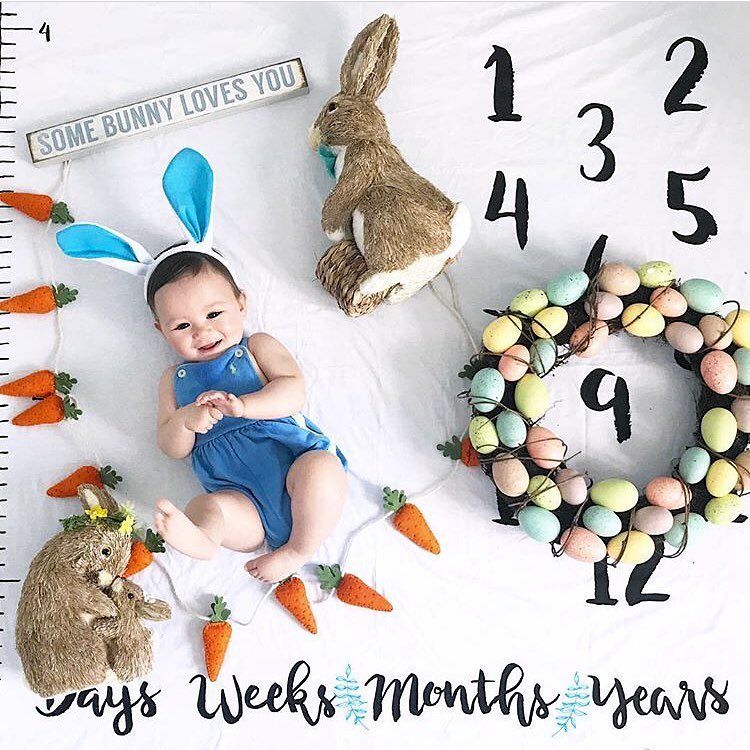 If you do think they are being neglected, you can check: Are they cold? Are they making crying sounds for more than a few minutes before (or at) feeding time? Are they blue? Is the skin shriveled? Check for dehydration: gently pinch together the skin at the nape of the neck. If it sticks together or stays in a tent, they are dehydrated. A healthy kit has a round belly, is warm, gains weight on a daily basis, and snuggles with its litter mates. If they are dehydrated, cold, losing weight or becoming injured, of course, something must be done
If you do think they are being neglected, you can check: Are they cold? Are they making crying sounds for more than a few minutes before (or at) feeding time? Are they blue? Is the skin shriveled? Check for dehydration: gently pinch together the skin at the nape of the neck. If it sticks together or stays in a tent, they are dehydrated. A healthy kit has a round belly, is warm, gains weight on a daily basis, and snuggles with its litter mates. If they are dehydrated, cold, losing weight or becoming injured, of course, something must be done
WHAT TO FEED THE BABIES
Baby rabbits should be fed Kitten Milk Replacer (KMR) or goat milk, which you can buy at pet stores, or sometimes even a local veterinarian’s office. Because rabbit milk is the most caloric of all mammals, we add in one tablespoon of 100% heavy whipping cream (no sugar) to each can of KMR. Most kits will not nurse from the baby animal bottles you can buy at stores. Instead, use a sterile oral syringe, which can be purchased at most pharmacies. A better alternative are these nipples, which come the a syringe, but you may not be able to find them locally/right away (link).
A better alternative are these nipples, which come the a syringe, but you may not be able to find them locally/right away (link).
It is best to feed baby rabbits no more than twice a day, but sometimes it takes more feedings to get an adequate amount into them, especially at first.
How much to feed varies greatly on what breed of rabbit you are feeding, and how big the kit is, but here is a basic guideline for the daily amount to feed a domestic rabbit who will be approximately 5-6 pounds as an adult (average rabbit size). You can increase the amounts as needed for larger breeds.
To help the kits maintain healthy gut bacteria, go to your local health food store (and get a bottle of ACIDOPHILUS. Ask for the capsules that have the “grainy stuff” inside (they are easier to mix than the “powdery stuff”) and add a bit to the formula at each feeding.
ALL amounts below should be divided into two feedings per day.
- Newborn – 1 week
- 4-5 cc formula
- 1-2 weeks
- 10-15 cc formula
- 2-3 weeks
- 15-30 cc formula
- 3-6 weeks, until weaned
- 30 cc formula
HOW DO I DO THIS?
Baby rabbits feed from their mothers while lying on their backs. You may loosely wrap baby in a soft face cloth or hand towel and lay it on your lap or in the crook of your arm. If bunny will NOT eat this way, of course, do the best you can. It is ABSOLUTELY CRUCIAL to let the baby eat at it’s own pace—especially if it is not suckling from the syringe willingly. If you squirt the liquid in too quickly you can aspirate (get liquid in) the lungs and the rabbit will suffocate.
You may loosely wrap baby in a soft face cloth or hand towel and lay it on your lap or in the crook of your arm. If bunny will NOT eat this way, of course, do the best you can. It is ABSOLUTELY CRUCIAL to let the baby eat at it’s own pace—especially if it is not suckling from the syringe willingly. If you squirt the liquid in too quickly you can aspirate (get liquid in) the lungs and the rabbit will suffocate.
Until their eyes open (10 days): After each feeding it is important to make the bunny defecate and urinate to keep the intestinal tract and urinary system running smoothly. Use a soft cloth or a cotton ball moistened with warm water and gently stroke the genital area until the bunny starts producing stool and urine. Keep stroking until the bunny stops. You are replicating the behavior of the mother rabbit who would lick her young to stimulate them to go to the bathroom. The stool will be soft and may be varying shades of green and yellow.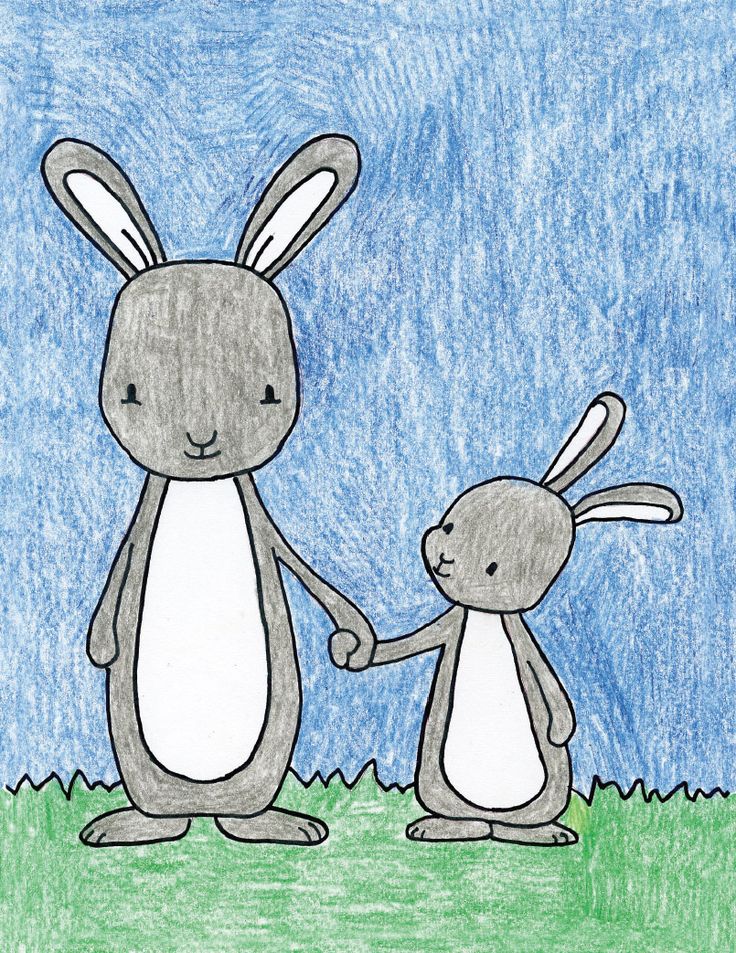 If the urine is brown and gritty, the buns are not adequately hydrated and you need to get them to a rabbit vet ASAP—-it is an emergency. Be sure to clean baby’s mouth with a damp cloth or paper towel, so that no milk dries in the hair.
If the urine is brown and gritty, the buns are not adequately hydrated and you need to get them to a rabbit vet ASAP—-it is an emergency. Be sure to clean baby’s mouth with a damp cloth or paper towel, so that no milk dries in the hair.
Baby rabbit eyes open at about 10 days of age. You may start introducing them to hay and pellets at this point, but no veggies or fruits yet. Just leave some timothy or orchard and alfalfa hay and pellets in a corner of the box where the babies can easily get to them. Make sure it the pellets are plain, high fiber and fresh, with no added goodies such as dried banana chips or seeds. Don’t ever leave a deep water dish in which a baby could drown; instead, use something shallow and rinse and fill it frequently.
If you have any questions, please contact us.
How to feed rabbits without a rabbit: artificial feeding
Even experienced rabbit breeders have situations when a rabbit who has just given birth dies, and newborns remain orphans. It is not always possible to plant babies with another female who has littered, and the task of saving the offspring falls on the shoulders of the rabbit breeder. You can feed rabbits without a mother rabbit using mixtures or cow's milk.
It is not always possible to plant babies with another female who has littered, and the task of saving the offspring falls on the shoulders of the rabbit breeder. You can feed rabbits without a mother rabbit using mixtures or cow's milk.
Contents
- Is it possible to feed rabbits without a rabbit
- Food selection
- Milk
- Kozie Milk
- Children's diet
- Special mixtures
- Artificial feeding by age
- from birth to the 5th day
- from 6th to 14th days
- From the 15th to the 30th day
- At the age of 1 month
- At the age of 2 months
- Dishes and equipment
- Features of the procedure
- Care
Is it possible to feed baby rabbits without a female rabbit? You will need to stock up on special mixtures or add additives to cow's milk, purchase syringes or pipettes for feeding.
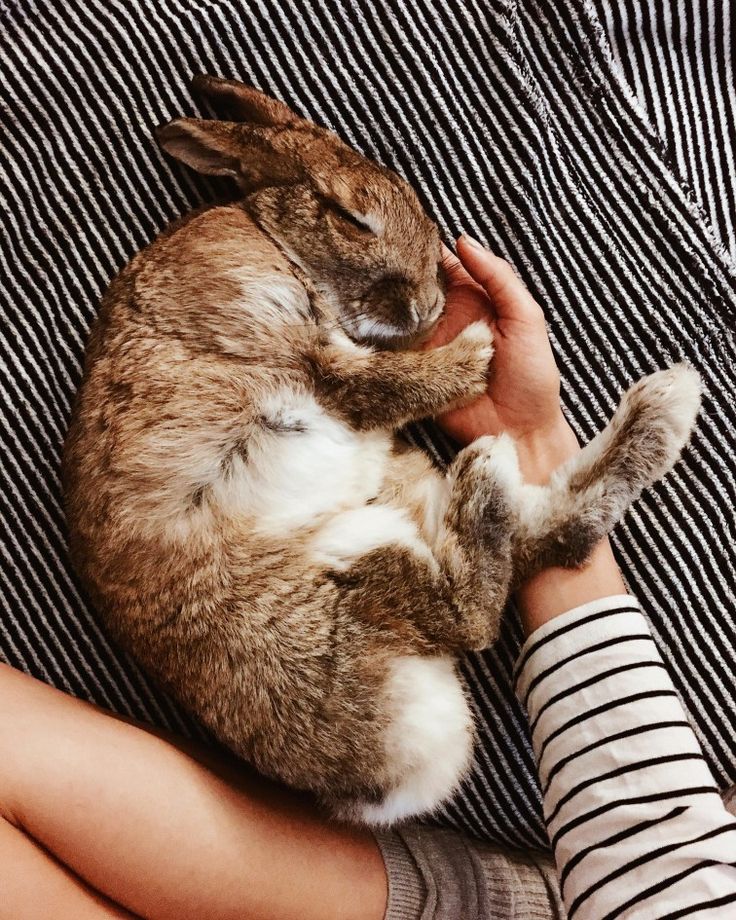
If the female rabbit is alive, but does not feed the young rabbits (this can be determined by the restless squeak from the nest and a small weight gain in young animals), the babies will also have to be fed. But in this case, it is more likely that the offspring will grow up safely, since the mother will warm the cubs and carry out hygiene procedures.
Selection of nutrition
Rabbit milk has its own characteristics and differs in composition from cow and goat milk. It includes:
- 10.5% fat;
- 12.5% protein;
- 2% sugar.
For comparison, normalized cow's milk contains only 3.5% fat, 4% protein, but 4.7% sugar . Approximately the same composition in goat's milk.
Feeding rabbits with the milk of other animals without bringing it to the required conditions will lead to inferior development and death of the offspring.
Cow's milk
Before feeding cow's milk to rabbits, additives are added to increase fat content.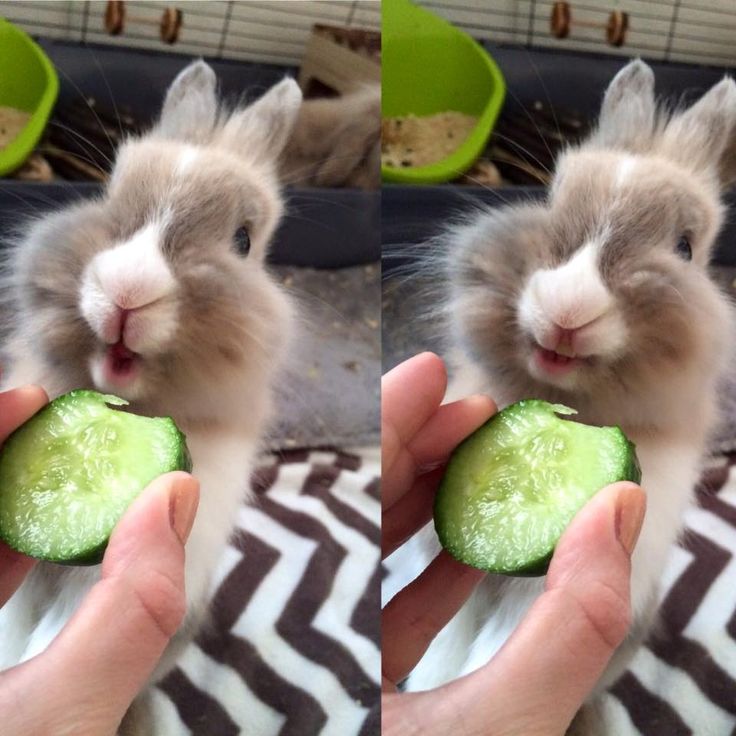 It is possible to introduce cow's cream into ordinary milk of medium fat content. The task of the rabbit breeder is to obtain a mixture with a fat content of at least 10%.
It is possible to introduce cow's cream into ordinary milk of medium fat content. The task of the rabbit breeder is to obtain a mixture with a fat content of at least 10%.
Some owners of orphaned babies dissolve 3-4 tablespoons of good butter in a liter of cow's milk and offer this composition to the rabbits.
The rabbit breeder needs to know that it is undesirable to store prepared milk with additives for more than a day.
Goat's milk
It's better to feed baby rabbits without loss if you get fresh goat's milk. It is fatter than cow's and is easier for the stomach to digest.
Its fat content must also be increased artificially by introducing cream or butter, but in smaller quantities. Approximate fat content of whole goat milk is 4-4.5%.
Baby food
To feed baby rabbits at home, you can use regular milk formula. The product must be diluted with boiled water not as indicated in the instructions for children, you need to prepare the mixture 2 times thicker.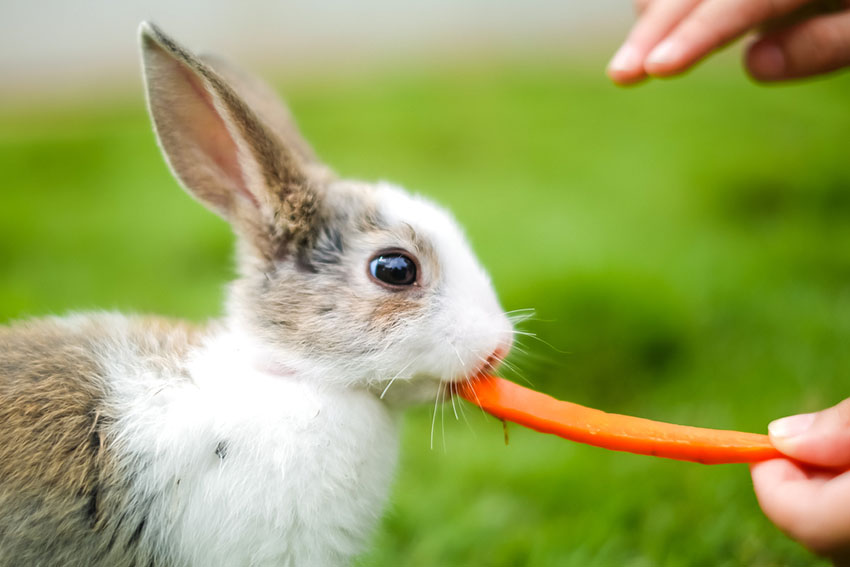 The concentrated dairy product is closest in terms of fat content, protein and sugar content to the milk required by rabbits from birth.
The concentrated dairy product is closest in terms of fat content, protein and sugar content to the milk required by rabbits from birth.
No need to spend money on an expensive mixture, the cheapest will do. The main thing is that it be of high quality and with a good shelf life.
Special formulas
Infant formula can be fed to young rabbits. They are sold in veterinary pharmacies and pet stores. For rabbits, puppy formulas are suitable, for example, products from Royal Canin, Beaphar. The disadvantage of this product is the high price.
Artificial feeding of rabbits by age
The mother feeds the offspring once a day, at night. When feeding newborn rabbits without a rabbit, you can stick to 2-3 meals a day at regular intervals. As the young grow older, they switch to two-time and one-time (after 45 days of age).
Infant formula should be of a homogeneous consistency (no lumps, foam) and at a temperature of 38-40 degrees.
From birth to day 5
Newborn rabbits are artificially fed three times a day . A single serving of food is from 2 to 4 ml. Not all babies can immediately drink this amount, they use 1 ml in one feeding, and 3-4 ml in another. Do not worry about this, such a refusal to feed happens. As a rule, at the next feeding, the baby catches up.
If the young are with their mother, but the female rabbit does not feed the young, they are given food once a day. They offer as much formula as they will eat, because there is a possibility that the babies get some milk from the mother.
Days 6 to 14
Starting at one week of age, increase the single dose of the mixture for each animal to 7-10 ml. Increase the amount of milk gradually, by no more than 1 ml per day.
From day 15 to day 30
Two-week old birds can be switched to two meals a day. A single serving of milk is increased to 15-20 ml.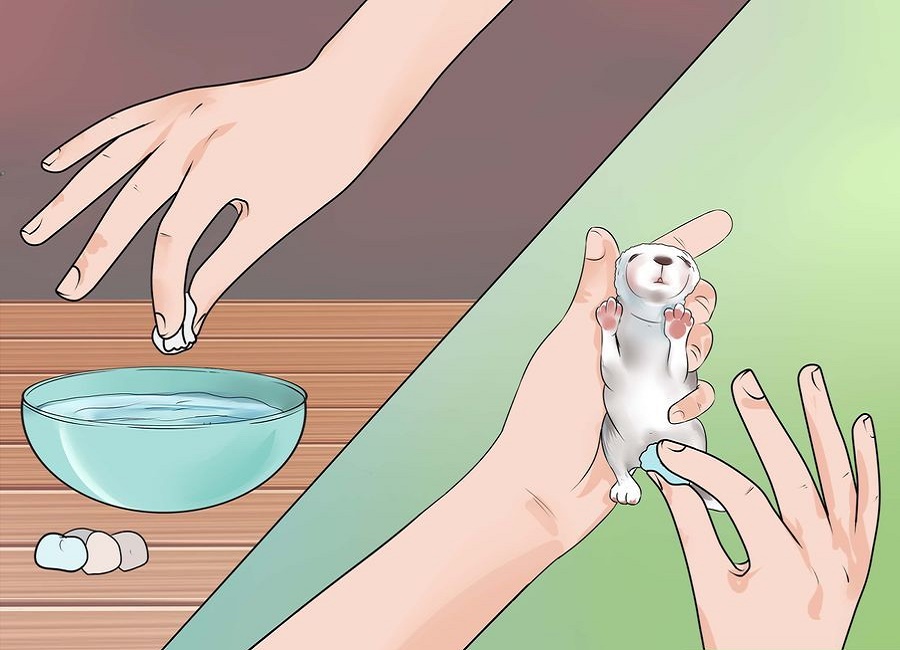 At the age of 2 weeks, babies open their eyes and are actively interested in the outside world. Young animals begin to introduce complementary foods:
At the age of 2 weeks, babies open their eyes and are actively interested in the outside world. Young animals begin to introduce complementary foods:
- put in free access the most delicate fragrant hay or dried grass;
- Carrots or zucchini are cut into thin chips and offered little by little to babies;
- oatmeal (hercules) or rabbit feed should always be kept in a separate bowl;
- in a cage or box hang a drinker with clean water.
It is useful to add any water-soluble multivitamin suitable for rodents to water (Chiktonik, Gamavit).
Small rabbits should not be offered wet mash and porridge, they quickly turn sour and can lead to indigestion.
At the age of 1 month
Another monthly rabbits are fed milk, giving 15-20 ml per feeding twice a day. Young growth already freely eats hay, vegetables and grain products.
The amount of hay for monthly rabbits is not limited, feed or grain mixtures are given at 20-30 g per day, vegetables - at 30-50 g.
At the age of 2 months
The milk period ends at this age. The young, who grew up without a mother, are ready to eat adult food: hay, vegetables and grain. Hay is given in plenty, and the rate of compound feed is increased to 50–60 g per head per day.
Rules for artificial feeding
To feed milk rabbits at home, you must prepare the necessary equipment and follow the rules for feeding. When caring for orphans, you need to keep dishes and hands clean.
Utensils and utensils
It is convenient to feed small rabbits from a syringe without a needle, pipette or a special nipple for feeding kittens. As the pups grow, the pipette is replaced with a larger syringe (for 20 cubes).
After each use, syringes and pipettes are washed with soapy water and scalded with boiling water.
For hygienic care of rabbits, it is necessary to prepare cotton pads and cotton swabs. A large, clean towel, which is spread on your lap during feeding, will come in handy to protect clothes from drops of milk.
Features of the procedure
The rabbits are fed in turn - each baby individually. The sequence of actions is as follows:
- The rabbit is taken in hand and turned over on its back, fixing its head between the fingers.
- Squeeze the mixture from a syringe or pipette drop by drop into the baby's mouth. It is important not to rush and not pour too much milk into the mouth so that the rabbit does not choke.
- Once the infant has become accustomed to the mixture entering the mouth and begins to actively swallow, the milk supply is made continuous.
Sometimes the baby rabbit refuses milk, spitting out and turning away from the nipple. They put it aside and try to feed it at the next meal. Sometimes the refusal of the mixture can be associated with its temperature - the baby cannot eat too cold or hot food.
Care
Small rabbits have a peculiar structure of internal organs that they cannot go to the toilet by themselves.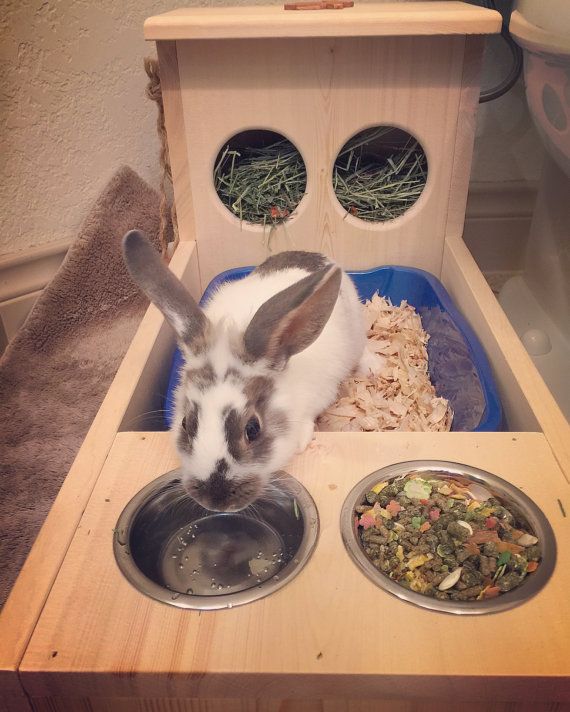 The rabbit helps them in this, licking their tummies and genitals.
The rabbit helps them in this, licking their tummies and genitals.
Animals are given a massage of the abdomen and genitals before each feeding. With a damp cotton pad or swab, make gentle circular motions or swipe from top to bottom over the tummy. Massage should provoke bowel movements, normally 2-5 minutes are enough to start the discharge of litter. The genitals are wiped with a damp cloth after the toilet. This procedure should be carried out for 2 weeks of the life of the young.
After feeding, it is necessary to clean the cub's muzzle of milk residues so that the mixture does not dry out in a crust on the coat.
What not to give to babies
The following components are contraindicated for feeding newborn rabbits:
- curdled milk and any fermented milk products;
- milk porridges as complementary foods;
- condensed milk (it has too much sugar).
When complementary foods are introduced, products that cause increased gas formation in the intestines and loosen the stool are excluded: cabbage, any kind of beet, peas, fresh grass.
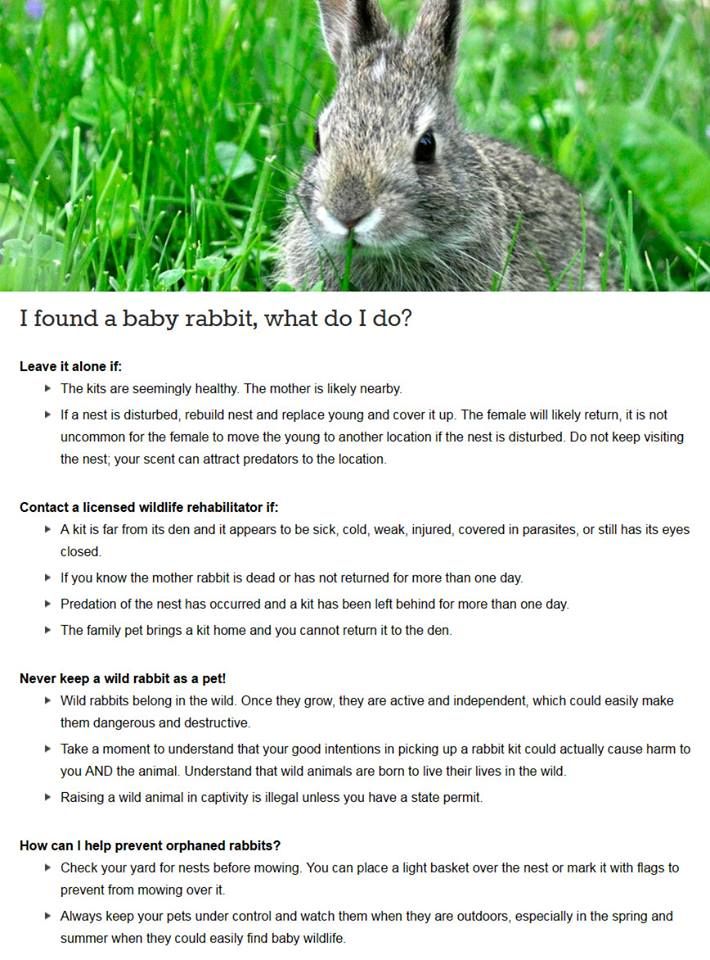
Grain or compound feed is given dry. Mixers are harmful to babies because they stain the coat and clog the nasal passage.
Tips for artificial feeding
The main indicators of the health of a bottle-fed rabbit are weight gain and frequent toileting.
Normally, young animals go to the toilet before each feeding, immediately after the massage. The color of the stool is yellow with a greenish tint. After the introduction of complementary foods, the feces become black. There should be no diarrhea.
Rabbits grow fast. Having at birth a weight of 40-50 g, by the age of 12 days they double this weight. At 1 month, a Chinchilla or Californian rabbit should weigh 600–800 g.
Self-feeding of orphaned rabbits, although a troublesome event, is economically feasible if the livestock is thoroughbred and the babies were born strong and healthy.
How to feed rabbits without a rabbit
How to feed rabbits without a rabbit - this question sooner or later confronts all owners of farms where rabbit breeding is practiced. The best option is to replant the babies with another female or resume natural feeding from their own mother, but this is not always possible. In this case, artificial feeding becomes the only way out.
Is artificial feeding of rabbits justified?
Many rabbit breeders are of the opinion that artificial feeding does not make sense - babies get sick, develop poorly and rarely live more than a few weeks. Indeed, raising rabbits on your own is quite difficult and requires patience, scrupulousness and a sequence of actions. But if everything is done correctly, the rabbits grow up healthy and beautiful.
If you notice that the rabbit is aggressive towards the rabbits, chews them or refuses to feed them, try to stretch her nipples a little, plant and slip the rabbits in this position. You need to hold mom a little so that the kids have time to eat. But when no tricks help, you need to immediately decide on artificial feeding - the rabbits very quickly weaken without feeding, freeze and die.
It is hardly possible to talk about 100% survival on artificial feeding. Much depends on the age at which the offspring is located. The most necessary and valuable substances for the body of the cubs enter their body with the first drops of mother's milk. It is they who launch the immune system and give the strength of life. It is clear that the most difficult thing is with rabbits, who received nothing at all from their mother. But you can feed from scratch if everything is done correctly.
What to feed little rabbits?
Compare the nutrient content of cow, rabbit, goat, dog and human milk.
Three variants of artificial food can be considered optimal:
- Dog milk is closest in composition to rabbit milk. But even if there is a lactating dog somewhere nearby, you can’t slip the rabbits on her for obvious reasons. But you can buy powdered dog milk for feeding puppies.
- A good result is obtained by artificial mixtures sold in specialized stores and intended for feeding kittens, puppies, rabbits.
- Often, in the absence of either one or the other, they resort to goat's milk, but its composition is still very different from what the rabbit feeds her babies.
Since there is not always time to buy the right food, it is better to prepare in advance or start from the most affordable option. In rural areas, it is usually not a problem to get goat milk; closer to the city, it is easier to buy a special formula for feeding. In extreme cases, you can use infant formula, which is always available in a house where small children live.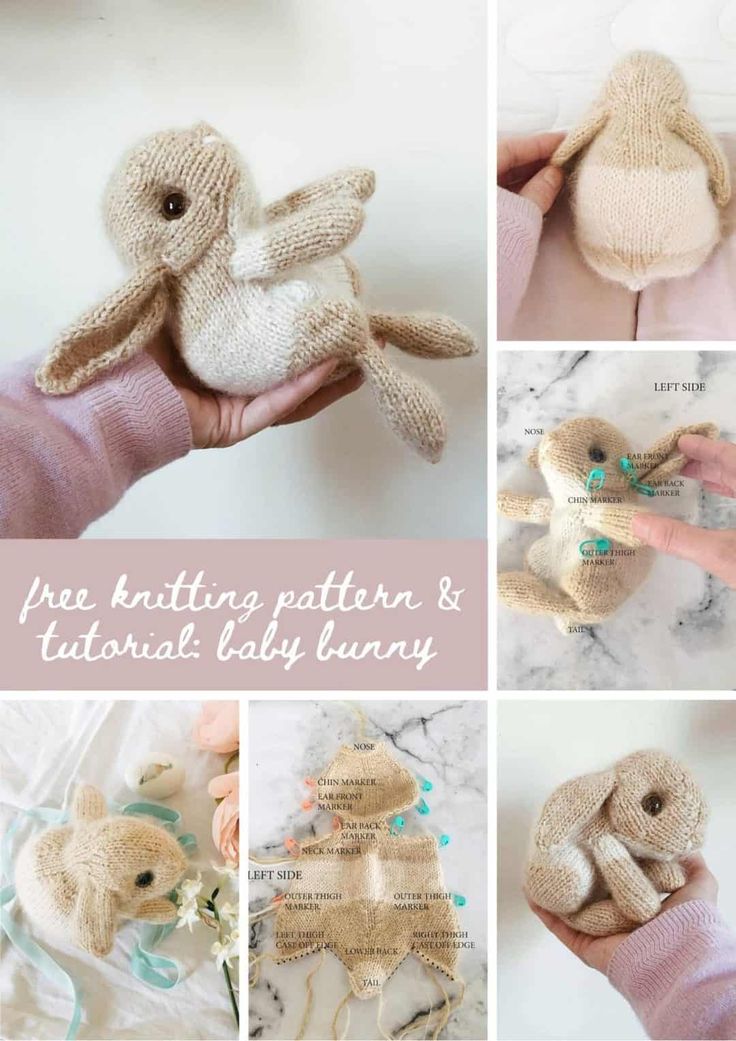
Proper feeding of rabbits without a rabbit
Rabbits need to be fed drip. Based on this, a tool is selected - it can be a syringe with a removed needle or a drop bottle with a removable nipple. If you have time to prepare in advance, you can purchase a special kit for feeding newborn baby animals at the pharmacy. It usually includes syringes and several feeding nozzles.
If the babies are already a few days old, you can try to feed with a pipette, later replacing it with a regular nipple. Approximately starting from the age of one month, babies can themselves lap from a saucer. In rare cases, it turns out to be accustomed to a saucer already on the 15-20th day of life.
The health and survival of babies depends on how well artificial feeding is performed. It is necessary to take into account both instincts and biological characteristics and reproduce the natural process of feeding to the maximum. At first, the rabbits do not perceive the artificial udder very much, they react weakly to it or completely ignore it. Therefore, especially the first feedings should be carried out very carefully, do not forcefully pour milk inside, but lightly smear one drop over the oral cavity and let the baby lick off the mixture himself. Forcibly dripping into the mouth can cause the rabbit to suffocate if the milk enters his respiratory tract. the baby should be in an upright position, that is, it must be held with one hand. Over time, the kids get used to it, and the procedure becomes easier.
It is necessary to take into account both instincts and biological characteristics and reproduce the natural process of feeding to the maximum. At first, the rabbits do not perceive the artificial udder very much, they react weakly to it or completely ignore it. Therefore, especially the first feedings should be carried out very carefully, do not forcefully pour milk inside, but lightly smear one drop over the oral cavity and let the baby lick off the mixture himself. Forcibly dripping into the mouth can cause the rabbit to suffocate if the milk enters his respiratory tract. the baby should be in an upright position, that is, it must be held with one hand. Over time, the kids get used to it, and the procedure becomes easier.
A newborn baby rabbit needs 4-5 ml of milk or formula per day. The frequency of feeding is 2-5 times a day (depending on how willingly and intensively the kids absorb the offered food, how they go to the toilet). Do not think, the more often you feed the rabbits, the better.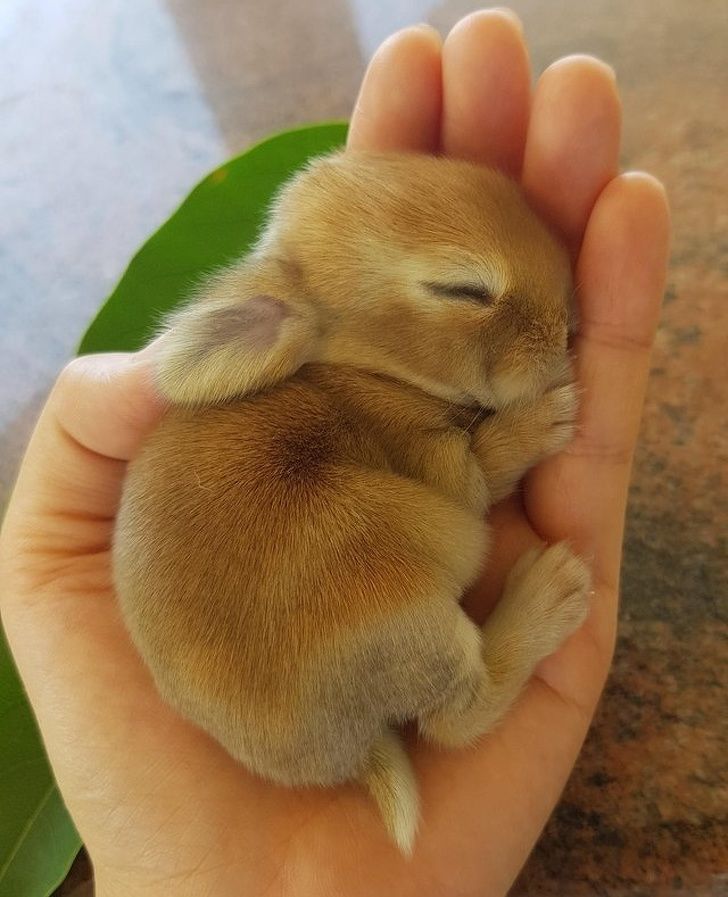 Each feeding takes strength from the baby, while he gets very tired. At first, give the rabbits 10-12 drops of milk and feed no more than 3 times a day.
Each feeding takes strength from the baby, while he gets very tired. At first, give the rabbits 10-12 drops of milk and feed no more than 3 times a day.
It is important not to overfeed babies. When they get used to the pipette, they eat more willingly and may well “overdo it” with the quantity. In this case, the rabbit's stomach is full, which can be hazardous to health. This can be avoided by taking small breaks in feeding. If, after a short pause, the baby is no longer active, it means that he is already full and no longer needs to give milk.
The milk norm increases with the age of babies. After a week, the rabbit should receive twice as much milk, and after two - three times. The approximate norm for 2-3 week old rabbits is 7-13 cc of milk (you can start adding green herbs, granulated food and water), for 3-6 weeks old - 13-15 cc (feed 2 times a day). Then you can gradually include dry food in the diet of rabbits, starting with grated carrots, chopped hay.
Many rabbit breeders recommend adding acidophilus to milk, and at the age of 7-10 days, start giving cecotrophs (rabbit droppings balls) to rabbits. The fact is that most often artificially fed rabbits die from mucous enteritis, the signs of which can be liquid droppings, the presence of blood and mucus in it, diarrhea, refusal to eat, bloating and gases.
The fact is that most often artificially fed rabbits die from mucous enteritis, the signs of which can be liquid droppings, the presence of blood and mucus in it, diarrhea, refusal to eat, bloating and gases.
The cause of this disease is the accelerated growth of pathogenic microflora in the caecum. The acidity level of babies and adult rabbits is very different (in the direction of greater acidity in babies). When baby rabbits are born, the inside of their stomach is practically sterile. Mother's milk provides the necessary immune protection and practically cannot bring pathogenic bacteria to babies. And when the babies open their eyes at the age of 10 days, they begin to pick up the mother's caecotrophs themselves. Artificially fed babies are deprived of this opportunity.
When a rabbit is just born, it does not yet have the instinct to empty the stomach, bladder and intestines. With natural feeding, these processes are monitored by the mother, who licks the tummies of her babies with her tongue, thereby squeezing out the contents from the intestines. With artificial feeding, this responsibility falls on the owner of the animals.
With artificial feeding, this responsibility falls on the owner of the animals.
It is necessary to massage the tummies before each feeding, reproducing the movements of the rabbit as much as possible. If this is not done, the tummies of babies swell and a rupture of the internal organs may form. Take a damp washcloth and lightly run along the tummy, pressing lightly at the bottom. as soon as the intestines are emptied, you can start feeding. Babies begin to go to the toilet on their own at about 2 weeks of age.
At each feeding, the cleanliness of the rabbits must be monitored. There should be no dried milk on the muzzle of the rabbit, contaminated places should be immediately wiped with a clean napkin. Make sure that there are no food residues on the baby's body. It is also necessary to monitor the cleanliness around the anus - this is usually also done by the mother, carefully licking and massaging this place.
For babies who have not received the necessary immune protection from their mother, cleanliness is an important factor in maintaining health.